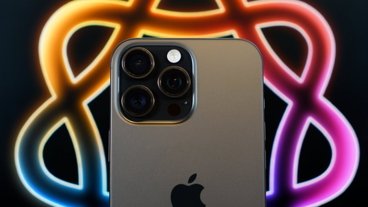Analysts predict that recent reorganizational efforts and a financial assist by the Japanese government for Apple supplier Japan Display, the prime supplier of iPhone screens, may not matter much if Apple does in fact shift to OLED screens in the "iPhone 8" and future models.
Rod Hall of J.P. Morgan writes in a note provided to AppleInsider that Japan Display's sales are set to fall sharply in the second half of 2017, as a result of an industry-wide shift to OLED smartphone displays. Given that Apple represents about half of the company's 450 billion yen ($4 billion) in sales, a loss of even half of Apple's business will have a profound impact on the company.
Apple currently only uses OLED displays in the Apple Watch, and for the Touch Bar in the 2016 MacBook Pro. However, the technology has been rumored to appear in the advanced 10th anniversary "iPhone 8" or "iPhone X," suspected to arrive alongside an "iPhone 7 Plus" refresh in the fall.
Why OLED?
OLED displays have a greater contrast ratio, and superior color display to LCD. The technology has significant power efficiency improvements over LCD screens, as a black pixel consumes no power.
Without the need for a backlight, an OLED screen can be thinner than competing technologies, all other factors equal. OLED response times can theoretically reach 0.01 milliseconds, versus 1 millisecond for modern LCD screens.
Other than Samsung, there are several vendors of OLED Panels. However, at this time, none come close to approaching the volume of the Samsung fabrication plants. Samsung holds the vast majority of OLED technology patents, and in 2010 held 98 percent of the share of the OLED smartphone screen market. The number has since only fallen slightly to 97.7 percent in April of 2016, with manufacturing problems being the primary hurdle to wider success by others.
Analysts point to Apple being the future prime mover of the OLED market. Industry analytical firm IHS points to a current 20 percent adoption rate of the display, without Apple involvement. However, IHS believes that by 2020, the technology will be seen in 40 percent of all smartphones sold.
A sea-change at Japan Display may be taking place now
Propping up some sagging fortunes due to a late adoption of OLED technology, in December Japan Display received a $636 million bailout from a Japanese government-backed investment firm. It dedicated part of the investment into buying a controlling stake in Joled, an OLED firm created out of units formerly belonging to Sony and Panasonic. When the investment in Joled will be productive for Japan Display is not clear, however.
Japan Display attempted to stem the tide of an OLED shift in January by introducing a flexible LCD, with plans to start mass production in 2018. Beyond smartphones, Japan Display is hoping to sell flexible panels for other uses, such as integrated into laptops and in-car media displays.
Apple's rumored "iPhone 8" may be released in September alongside an "iPhone 7s" family, and is said to feature next-generation technology like an OLED "wraparound" screen with Touch ID home button and other sensors embedded behind the glass. Recent rumblings out of Apple's East Asian supply chain suggest the device will ditch aluminum for forged stainless steel as part of a "glass sandwich" design reminiscent of the iPhone 4 series.
Recent rumors out of the supply chain suggest that Apple may start construction of the iPhone 8 earlier than normal — which would mean that Japan Display would need to supply OLED screens from an as-of-yet undeveloped construction line for it sooner than expected, if it wishes to be included in the rumored new model.
 Mike Wuerthele
Mike Wuerthele

-xl-(1)-xl-xl-m.jpg)





-m.jpg)






 Wesley Hilliard
Wesley Hilliard
 Marko Zivkovic
Marko Zivkovic
 Andrew Orr
Andrew Orr
 Malcolm Owen
Malcolm Owen


 Andrew O'Hara
Andrew O'Hara
 William Gallagher
William Gallagher






3 Comments
Too bad manufacturers don't shamelessly infringe in Samsung patents like Samsung does.
Apple's probably unclear, too. How many times have we seen multiple designs and multiple supplies in play because Apple plans for multiple, various contingencies?
There are some clear benefits to OLED and Apple has started to exploit them in Watch. There could easily come a time when Apple moves a product line or part of a product line to OLED. That doesn't seem like it's this year, but Retina displays seems too good to be true, too, when they first launched.